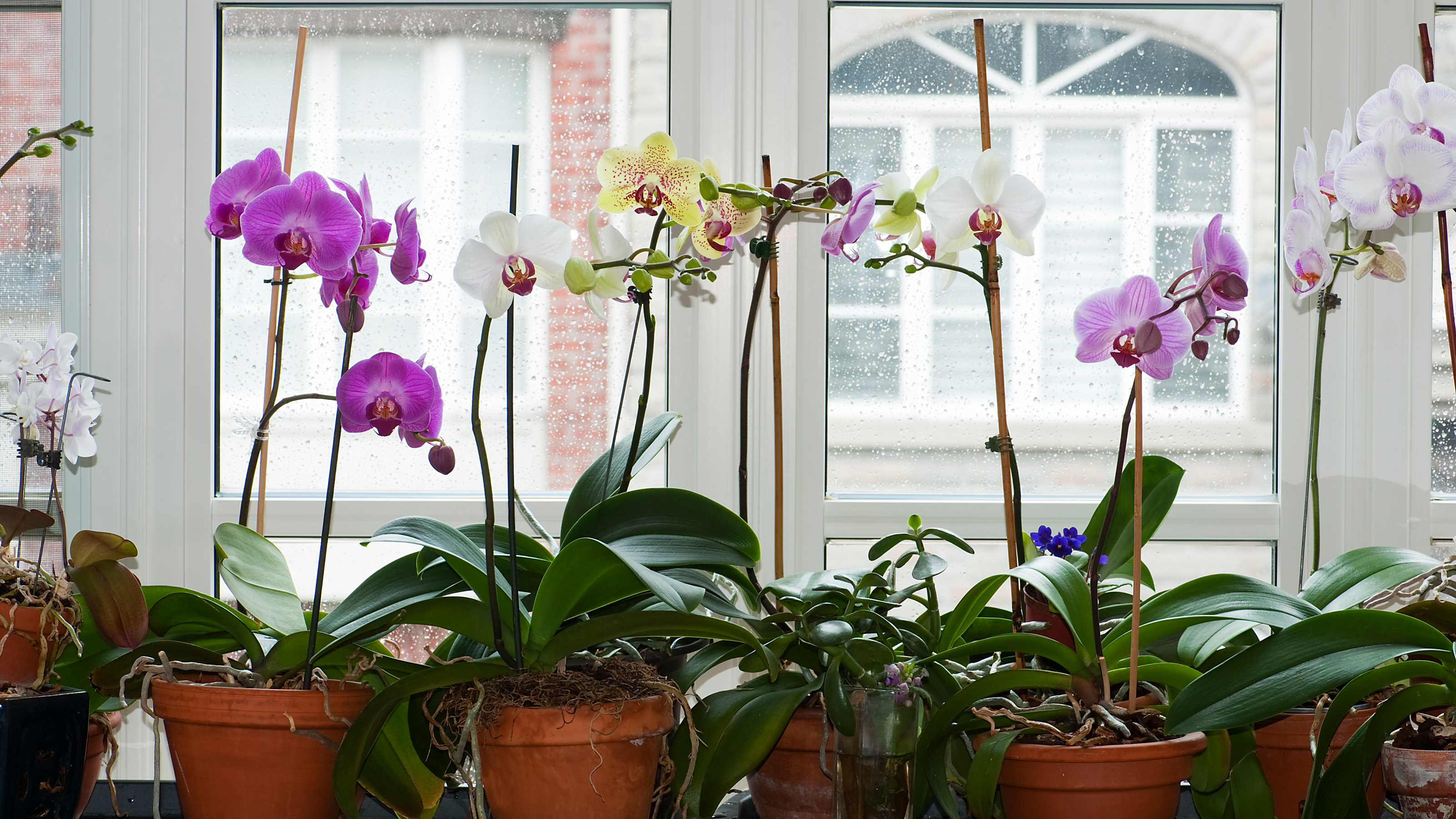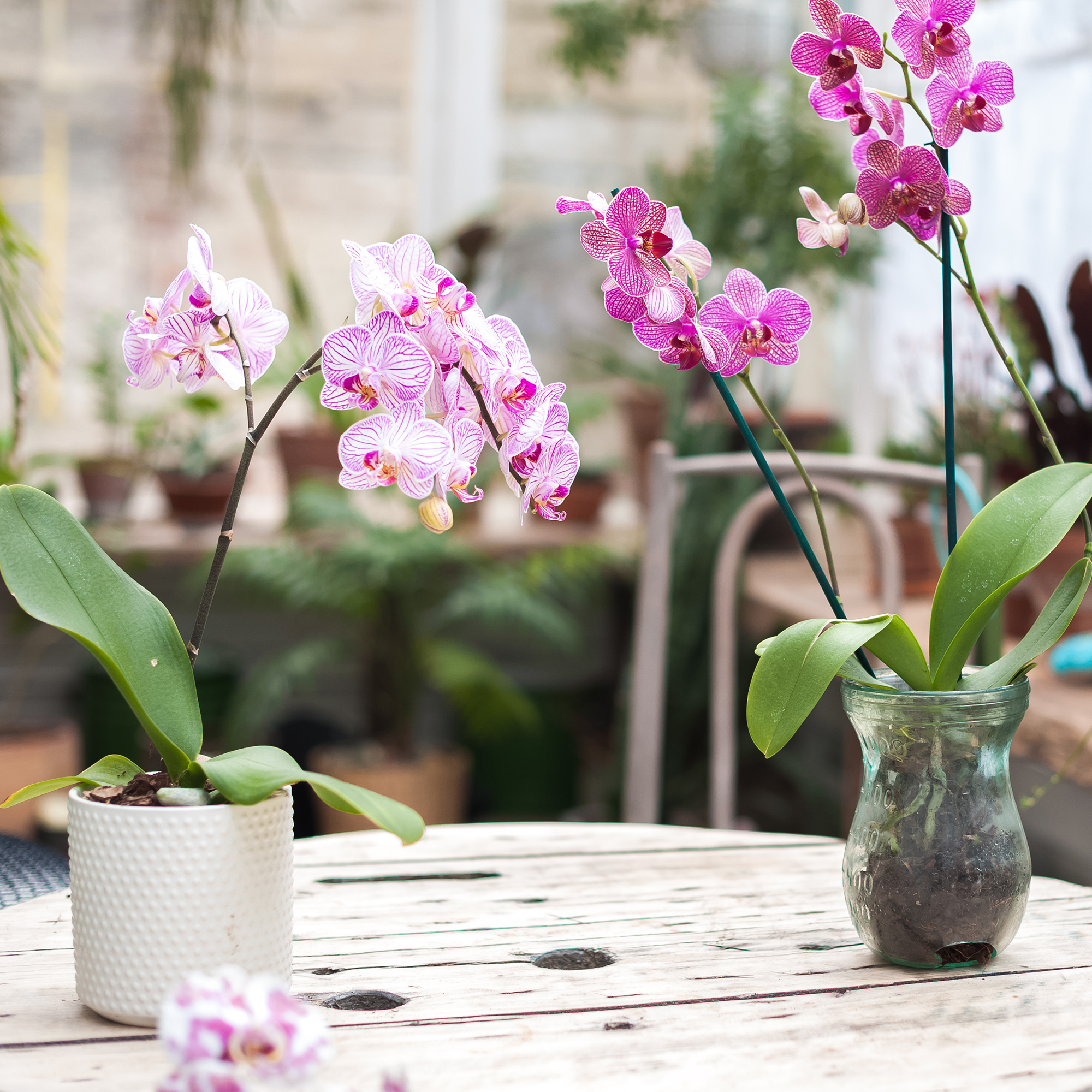How long do orchids live? Spoiler: much longer than you might think...
If your orchid has dropped its flowers and looks on the brink of death, don’t worry. Orchids are zombies!


It’s the big question on everyone’s lips; how long do orchids live? And it’s fair to say that it’s a valid question.
Although orchids are said to be one of the luckiest houseplants you could have in your home, they’re also one of the most fickle plants out there. And as many people are gifted these tropical plants by generous friends, family, colleagues, and new neighbours, that fickleness can cause a problem.
Yep, the pressure to care for an orchid and to keep these plants alive can be overwhelming, and there’s nothing more embarrassing than showing off what looks like a dead, flower-less stick the next time the gift giver visits your home.
But should you throw out an orchid when the flowers have dropped, and the ugly-looking stem and Frankenstein-esque roots are the only things that remain? It looks dead… so it must be dead, right?
Well, we decided to ask the experts and find out how long orchids live once and for all. And you might want to think twice about sending your orchid to the houseplant graveyard next time it drops its flowers.
How long do orchids live?

Orchids are the perfect houseplant for a living room, bathroom, or bedroom. And while many people choose to fill these rooms with orchids due to their unique appearance and brightly coloured blooms, the flowers don’t stick around forever. The plant itself doesn’t stick around forever, either… but the typical lifespan of a potted orchid is still around 10 to 15 years.
So, when looking at your flowerless stem, it’s best to see this plant as two separate entities; the flowers and the main plant itself. That’s because orchids go through a bloom cycle, and when the plant isn’t flowering, it enters into a dormant resting period. Some would even call it an orchid’s “hibernation” period.
Sign up to our newsletter for style inspiration, real homes, project and garden advice and shopping know-how
A typical orchid blooming cycle

Of course, most orchid owners would love to see all-year-round blooms - but this just isn’t the way of the orchid. And while typical orchids are perennials and keep their leaves throughout the year, there are some species that even shed their leaves as the months go by. This can be a serious cause for concern for orchid novices, but this is all part of the orchid bloom cycle.
The typical orchid in a pot blooms just once a year, and this blooming period normally lasts around two or three months. However, if orchids are watered properly and are in a prime spot (bright, indirect sunlight) have been known to bloom twice a year.
But without knowing this, many people make the mistake of assuming that their orchid is dead. But falling blooms are all part of the orchid life cycle. It’s during this phase that the orchid starts to enter its dormant period. And in the words of the almighty Gary Barlow, you just need a little patience.
How to care for a dormant orchid

It would be easy to think that you can leave a dormant orchid to its own devices, but proper care and attention during this period are essential - especially if you want to promote a faster and more vibrant flower cycle. So here's what you can do to promote better blooms next year:
- Repot your orchid: Although it may seem risky, the best time to repot your orchid is during this dormant period. This will ensure that it wakes up to the perfect environment for blooming, and this should be done every year during dormancy.
- Reduce your watering schedule: To avoid drowning your dormant orchid’s roots, reduce your watering schedule and give them water every one to two weeks. If you can, avoid watering your dormant orchid at the same time as using your fertiliser.
- Fertilise your orchid: Dormant orchids still require the same amount of nutrients as when they’re awake, so setting up a fertilising schedule (ideally once every two weeks) will be incredibly beneficial for your plant's growth. Water-soluble fertiliser is best, like this Baby Bio Orchid Food from Amazon.
- Keep an eye on it: Falling blooms aren’t a sign of a dead orchid, but yellowing leaves are a sign that your houseplant is beyond reviving. Plant expert Philip Crowther from Prestige Flowers lovingly calls orchids the 'zombie' flower.
'Sometimes orchids play dead, but they're just taking a power nap,' he says. 'Check the roots, give them a trim if needed, and look for green leaves. Be patient and give them some extra TLC, and they'll rise from the dead!'

How long does a potted orchid live?
Potted orchids typically live between 10 and 15 years, while wild orchids (or those in the garden) can live up to 20 years in the right conditions. This makes them a popular choice for houseplant enthusiasts who want a long-lasting plant that also looks good in the home.
However, it’s important to take proper care of potted orchids, as they rely on human intervention to ensure that they are in the right-sized pot, are receiving essential nutrients, and are placed in the perfect growing spot.
What do you do with an orchid after the blooms fall off?
Don’t just assume that it’s dead! When the blooms fall off an orchid, it’s gearing up to enter a period of dormancy. And while the plant no longer looks as beautiful as it once was, this is all part of the natural blooming cycle of the orchid.
Continue to care for it as you would any other time of the year, but reduce the watering and fertilising schedule slightly. By doing this, you’ll help it thrive as it comes out of its resting period - and, in some cases, it can result in a higher number of blooms the next year.

Lauren Bradbury has been the Content Editor for the House Manual section since January 2025 but worked with the team as a freelancer for a year and a half before that. She graduated with a Bachelor’s degree in English and Creative Writing from the University of Chichester in 2016. Then, she dipped her toe into the world of content writing, primarily focusing on home content. After years of agency work, she decided to take the plunge and become a full-time freelancer for online publications, including Real Homes and Ideal Home, before taking on this permanent role. Now, she spends her days searching for the best decluttering and cleaning hacks and creating handy how-to guides for homeowners and renters alike, as well as testing vacuums as part of her role as the Ideal Home Certified Expert in Training on Vacuums, having spent over 110 hours testing different vacuum models to date!